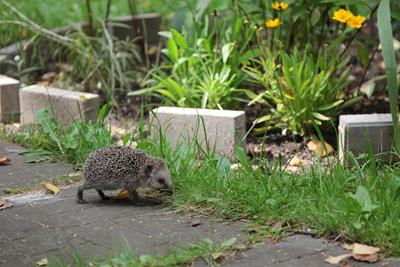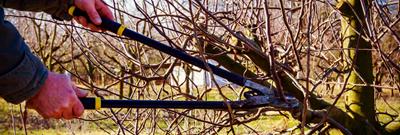
For many homeowners, their garden is their pride and joy, filled with beautiful blooms and ornaments to admire. For others, it’s a place to enjoy a summer barbecue with friends and make memories with family young and old.
Your garden feels like a part of your home. But does your home insurance cover it in the same way? In this article, we’ll look at the type of insurance you need to keep your plants, tools and furniture properly protected.
EASY AS HACK
Motion-activated security lights can deter thieves and help you to see if someone is in your garden at night. It will also help to keep you safe if you need to put the bins out in the dark.
At a glance
- Most home insurance policies provide some level of garden cover, but you’ll need to check your policy documents carefully to see exactly what’s covered.
- Remember to check your single item limit, especially if you have valuable tools or furniture.
- Your home insurance will only cover walls that belong to you – so make sure you know which are yours and which belong to your neighbours.
What is garden insurance?
Garden insurance is designed to protect your home’s outdoor space against theft and damage.
Most home insurance policies provide some level of garden cover, but you’ll need to check your policy documents carefully to see exactly what’s covered.
What does garden insurance cover?
Contents insurance covers belongings that can be moved. So, in a garden that could include:
- Garden furniture
- Lawnmowers and gardening tools
- Plant pots, ornaments and statues
- Barbecues and patio heaters
- Children’s play equipment, including swings and trampolines
Depending on the policy, there may be separate cover limits for potted plants, and for contents, such as barbecues, which are kept in the garden.
It’s important to understand the details of what garden cover includes. For example, your insurer might specify that gardening tools need to be securely stored when not in use for your policy to be valid. It’s also worth noting that any tools used for business purposes may not be covered.
What is not covered by insurance for your garden?
This varies between policies, but some common exclusions are:
- General wear and tear
- Damage caused by pets, birds, insects or vermin
- Damage caused by frost or drought
- Rot, mildew, fungus or plant diseases
- Valuable items left outside, e.g. laptops or jewellery/watches/money
Check your policy’s cover limits. If you have a lot of expensive garden equipment or exotic plants, you may need to increase your cover level or add specialist garden cover for an extra charge to be fully insured.
Also check the single item limit. This is the maximum amount you can claim for any one item, typically around £1,500. If you have a top-of-the-range free-standing hot tub or lawnmower, for example, it might be worth insuring it separately. Your policy may have two limits – one for the maximum amount you can claim for a single item and one for total contents outside.
Specialist garden insurance may also provide additional cover for extreme weather events or removal of fallen trees that standard buildings or contents cover wouldn't include.
What types of damage are covered by garden insurance?
Most insurance policies will pay for damage to your hedges and lawns within the boundary of your home.
The specifics vary between policies, so make sure to check your policy documents for what you are covered for. Some common examples covered by garden insurance are:
- Emergency services damage
- Fire damage
- Storm damage
- Flood damage
- Vandalism
- Accidental damage
- Damage caused by falling trees
You may find that your insurer will cover the cost of replacing any plants damaged but check your policy documents for specifics.
What damage is not covered?
There are a few things that are not generally covered by garden insurance:
- Smoke damage or damage from bonfires
- Damage caused by you, a family member, or anyone invited onto your property
- Any damage caused by activities related to your profession
- Damage caused by subsidence, landslip or ground heave unless the buildings are damaged at the same time
- Damage to fences caused by storm or flood. Your buildings insurance usually covers the areas that fall within the boundaries of your home, including fences. However, most standard policies won’t cover storm or flood damage to fences. If you’re not sure which fences you’re responsible for and which belong to your neighbours, check your property deeds. Your home insurance will only cover fences that belong to you.
Important: Damage caused by fallen trees is usually covered, but the removal of fallen trees may not be covered if there is no damage to the home.
Securing your garden
To reduce the risk of thieves targeting your garden, follow these tips:
- Keep your garden well lit. Install motion sensor lights and add lighting to tall hedges and dark corners that thieves might hide in to assess your home and garden.
- Reinforce fences and gates. Repair any holes to fences and gates, and replace damaged panels, if necessary, to make it harder for intruders to get in. Add padlocks to gates where possible.
- Secure your garden furniture. Consider using security chains to fix items like outdoor furniture and hot tubs to something solid like a fence or tree. And don’t forget any children’s play equipment.
- Install signs. Putting signs up warning people of CCTV and alarms, even if you don’t have them, can be a great deterrent to keep burglars and vandals away from your property. A ‘beware of the dog’ sign can also be effective, even if you haven’t got one.
- Keep your garden tidy. Don’t leave things like ladders and wheelie bins near your fences as people could climb them and gain access to your garden.
- Lock your shed. Lock your shed with a padlock to prevent thieves taking your tools.
How to claim on your garden insurance
You can make an insurance claim either online or over the phone in most cases.
To make a claim you’ll need your policy number, which can be found in your insurance schedule or statement of facts. Then, you’ll just need to follow the steps given to you.
How much garden contents cover do I need?
To work out how much cover you need, go around your garden adding up the value of everything. Remember to include items in your shed, as well as furniture.
If you bought any of your contents a long time ago, check the current equivalent price to work out their value as most cover is on a "new for old" basis.
You should also keep receipts for any high-value items as proof of ownership. This can make the process easier if you ever need to make a claim.
Learn more: How to value your home contents
You can find out more about our home insurance here.
FAQs
Is garden subsidence covered in home insurance? No. Subsidence damage to your house is covered, but not damage to your garden . Patios and paths would be covered if they were damaged at the same time as the house.
Does home insurance cover hot tubs? It can do, but check your policy document for specifics.
Are garden sheds covered by home insurance? Garden sheds are usually covered as part of your buildings insurance excluding wear and tear.
Does house insurance cover fences? Some insurers will cover fences under their buildings insurance but make sure you check your policy.
Are garden walls covered in buildings insurance? Garden walls are generally covered by buildings insurance, but to be certain, check your policy.


